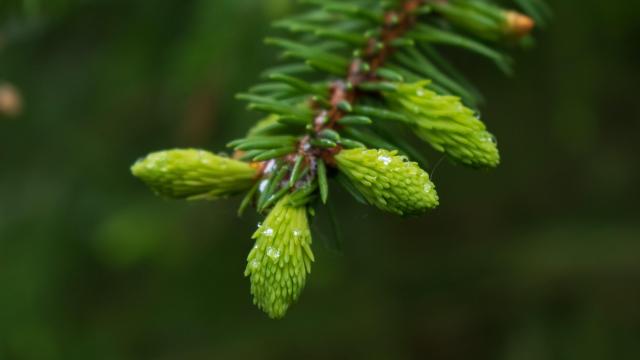Somewhere in the middle of the pandemic I fell down a rabbit hole, and learned all about tree tapping to make syrup. Yes — amongst us commoners, in neighbourhoods all across America, there are people who tap their own trees to produce their own maple syrup.
I know.
I immediately began suspiciously eyeing all trees in my neighbourhood. Damn you, PNW, with your majestic skyline and dumb forests of non-maple trees.
What we do have in spades are pine and fir trees, and making syrup from them doesn’t require any of the labour that maple does. (Bone up on how to make maple syrup and you won’t complain about the price ever again). Better yet, depending on where you live, now may be the perfect time to do it.
The first step is to locate a tree — a live tree that is still thriving in the ground, so your Christmas tree is a no-go, sorry. You want a fir or a spruce, and you want to be sure it hasn’t been sprayed. Seriously, if you aren’t into tree identification, phone a friend because not all pine trees are OK to eat.
Once you locate this magnificent specimen, you’ll want to pluck the lighter green growth at the tips. These are the spruce (or fir) tips. Some trees form this growth in spring, some in fall, and sometimes it depends on the year and the weather. Watch your tree for this growth, and keep in mind, this is the new growth of the tree, so taking all the tips from one tree stunts that tree. Spread it around a little, you know? You want to fill half a grocery bag’s worth.
Throw the tips into a big bowl. Cover them with brown sugar and toss to mix them up. You want double the amount of sugar to spruce tips by weight (for 226.80 g of tips, use 453.59 g of sugar). Now pack it all into a jar, and I mean pack it in. Really mash it in there.
Leave it at room temperature in a sunny window, and over the next few weeks, flip the jar whenever you think about it. Over time, the sugar will draw out the moisture in the tips, creating a syrup. If you’re lucky, it will start to ferment, and if it does, you should burp the bottle every few days. (You;ll know you need to do this if you see bubbles.) You could use white sugar, but don’t. You can also add things to the mix, like juniper berries or young male pine cones. Do not add pumpkin spice. Do not insult the spruce tips.

After two months, you’ll see a syrup. I use it right out of the jar and let it hang out as a live ferment, but if you want to go all the way, pour it into a saucepan, needles and all, let it simmer, then strain it. Pour it hot into a jar and it’s good to go in the fridge for up to three months.
Now: what to do with it? Make cocktails, obviously. You can make a hell of a hot toddy with the stuff, considering how much vitamin C is in spruce tips. I personally add carbonated water to it, creating a soda. You can also toss it into that fire cider you’ve been thinking about. (Have you been thinking about it?).
When in doubt: Use it as you would honey. I fell over when I read about using the spruce syrup as a glaze for pork belly. (Ugh, my heart.) I suspect it would make a kickass compound butter, perfect for breakfast biscuits. Imagine some in your holiday cranberry sauce!
So, if cutting down and killing trees to install in your living room doesn’t hit enough notes from The Giving Tree for you this season, find yourself a surviving spruce and avail yourself of (some of) its tips. Christmas tree syrup won’t have the visual impact of a dead tree sacrament, but it will taste a lot better.

Leave a Reply
You must be logged in to post a comment.